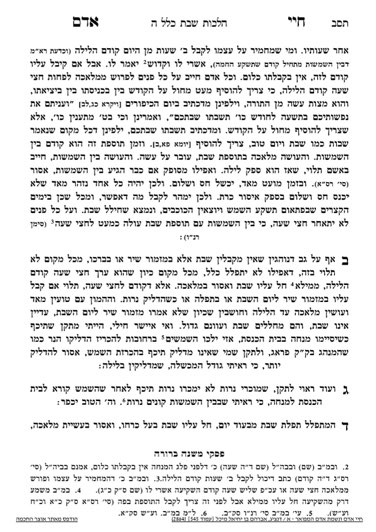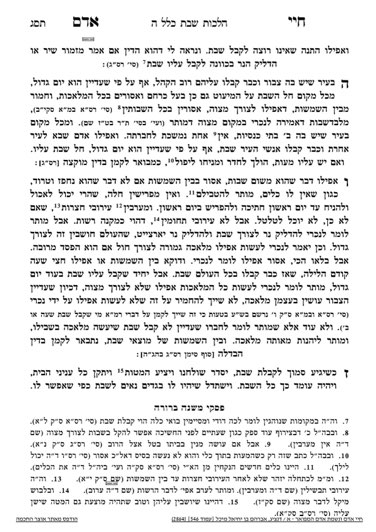We are about to begin siman 4, where the Chayei Adam will discuss the different levels of accepting Shabbos. We will begin with an introduction to understand the basis for the Chayei Adam, and how we derive there could be different levels of acceptance.
There is a seeming contradiction in the Shulchan Aruch. In siman 342, the Shulchan Aruch writes that Chazal did not prohibit issurim derabanan during bein hashmashos of erev Shabbos. The Shulchan Aruch adds that we only apply this leniency for a dvar mitzvah or other pressing need. In 393, the Shulchan Aruch writes that it is muttar to create an eruv chatzeiros during bein hashmashos, which fits with his opinion in siman 342. He adds that one can create this eruv chatzeiros even if they have already accepted tosefes Shabbos. Arguably, this psak is based on the mishnah at the end of bameh madlikin (mishnah 7). We have learned that tosefes Shabbos must, by definition, occur before bein hashmashos, so the Shulchan Aruch must hold that one can create the eruv, or perform other issurei derabanan (such as those mentioned in the mishnah there), even though they have accepted Shabbos.
The Shulchan Aruch continues, and writes that yeish omerim (some hold) that if one accepted tosefes Shabbos, it is assur.
Finally, in siman 261, the Shulchan Aruch writes that if one has recited barechu, they can no longer create an eruv chatzeiros nor perform hatmana, even if it is still daytime. Even though the mishnah states that one can perform these tasks, the Shulchan Aruch is clarifying that if one has already recited barechu, the mishnah does not apply.
Thus, in siman 342, the Shulchan Aruch holds it is muttar, in siman 393, he brings a machlokes, and in siman 261, he holds it is assur. Even in siman 393, where he brings a machlokes, he brings the first opinion without attribution, and the second with a yeish omerim. We have a rule that whenever the Shulchan Aruch brings the first opinion without attribution, and the second as a yeish omerim, it means that he primarily holds of the first opinion, but feels it is important to mention the second one as well. This rule is known as stam v’yeish omerim, halacha k’stam.
The basic approach to understanding this contradiction is that there are different levels of acceptance of Shabbos, and the level which one accepted will determine what is permitted during that time period. We will begin the siman in the next shiur, be’ezras Hashem.
Summary
There is a contradiction in the Shulchan Aruch regarding whether one can perform issurei derabanan after accepting tosefes Shabbos. The answer to this contradiction will help us understand the different methods and levels of accepting Shabbos.



